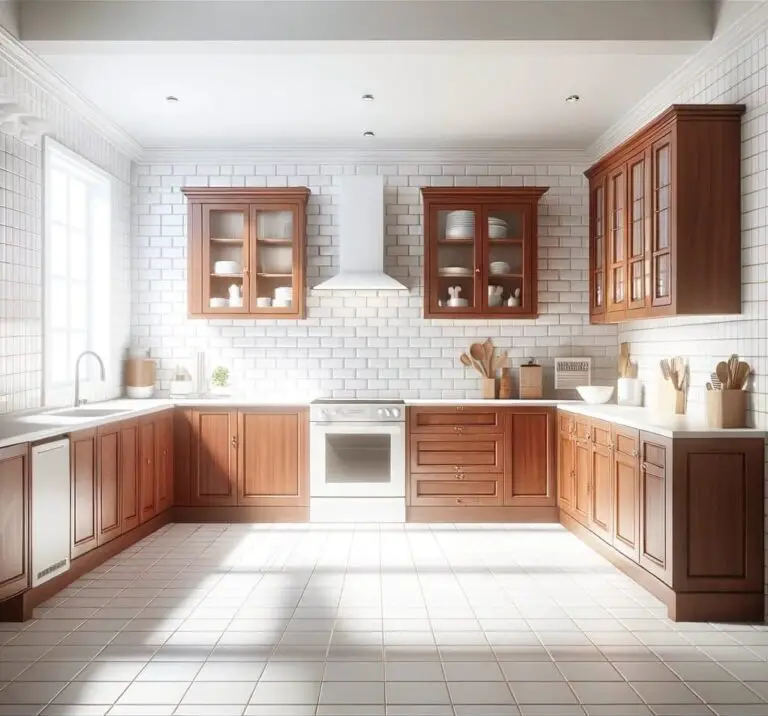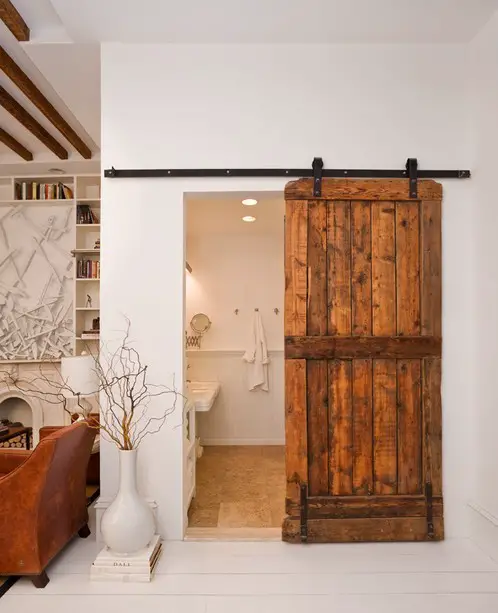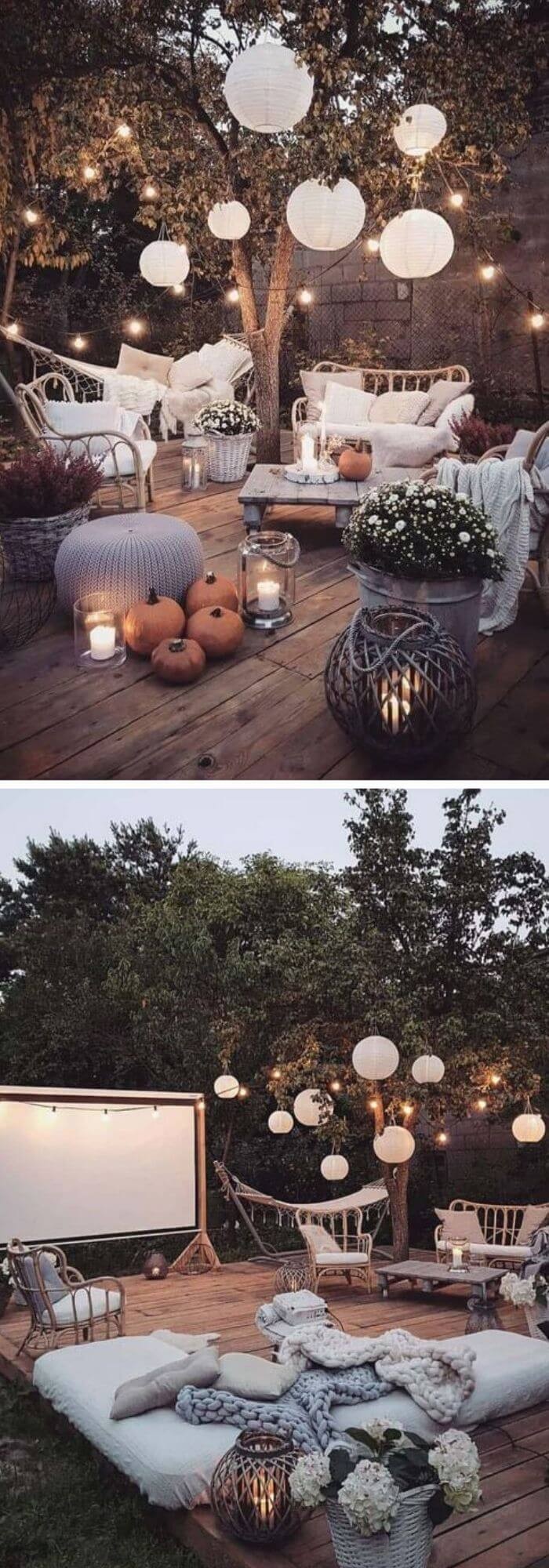25+ Waist High Raised Garden Bed Plans
When it comes to designing your outdoor space, waist high raised garden beds offer a multitude of benefits. Not only do they provide a visually appealing feature, but they also offer practical advantages such as improved soil drainage and reduced soil compaction. This can lead to longer growing seasons and less maintenance required. With their elevated design, these gardens are also more manageable, making it easier to tend to your plants.
If you’re considering incorporating waist high raised garden beds into your landscape, there are a variety of plans to choose from. In this post, we’ll be exploring different designs and options to help you get started. From cedar to concrete, and even using everyday items like wine boxes or milk crates, the possibilities are endless.
What is a raised garden bed?
In the context of gardening, a raised bed can have various meanings, but its core definition is any structure that sits atop existing soil. This can range from a few inches above ground to waist-high or even higher elevations. One of the primary advantages of raised garden beds is the creation of generous airspace around the soil itself, allowing for improved drainage and reduced compaction.
Benefits of a raised garden bed
One of the most compelling aspects of raised garden beds is their ability to simplify gardening processes. For instance, no tilling is required – simply layering soil and compost every few years keeps the bed thriving. Another significant benefit is the elimination of bending, thanks to the waist-high elevation that allows for comfortable plant maintenance.
Additionally, raised beds offer a critter-free environment, as slugs and other pests take time to reach the elevated planting area and can easily slip off the smooth surface. Furthermore, raised beds provide better drainage, which is particularly beneficial in marshy or flood-prone areas where excess water can be effectively trickled down through loose soil. This results in optimal plant conditions and a longer growing season for veggies and herbs.
With raised beds, you can also start planting earlier in the season, giving your garden an extra boost. Moreover, these structures are temporary, allowing you to change soil components without permanently altering your yard’s ecosystem. This versatility is particularly appealing for beginners who want to avoid complicated soil maintenance and tilling.
25 waist high raised garden bed plans
Diving directly into the heart of the matter, we’ll explore a selection of straightforward, budget-friendly, and functional waist-high raised garden bed designs that are perfect for beginners or experienced gardeners alike.
Cedar waist high raised garden bed
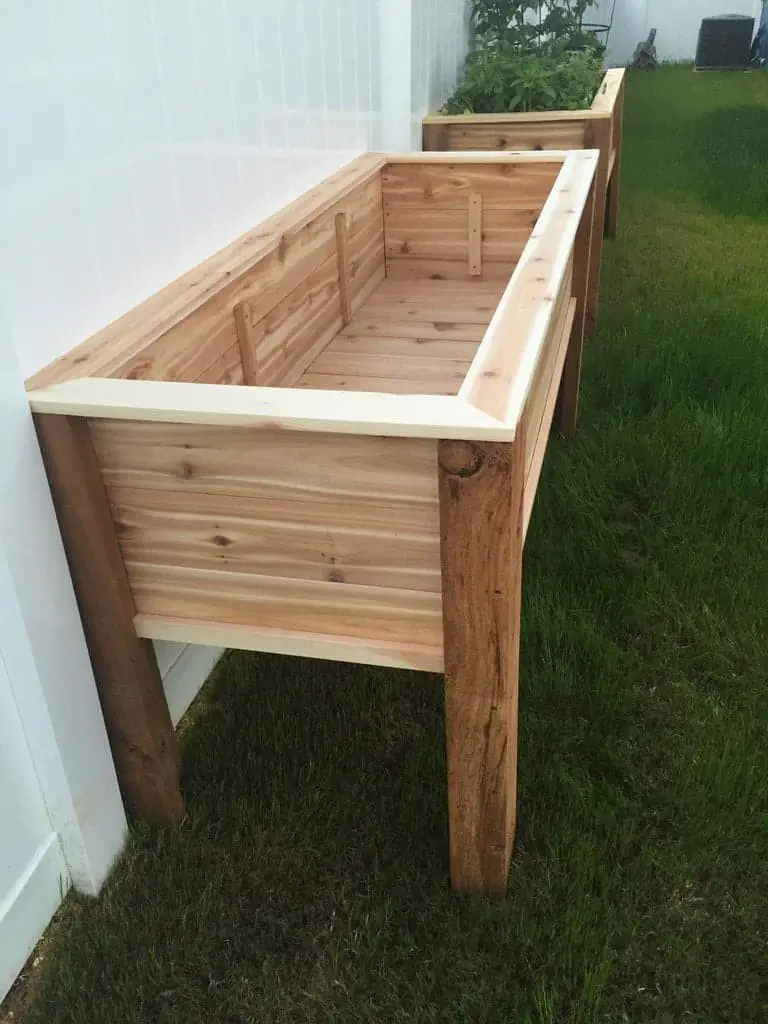
The elevated garden bed, measuring 3 feet by 6 feet, is constructed from high-quality cedar wood. Its substantial design boasts a volume of 18 cubic feet, with a depth of 2 feet. The use of cedar wood in raised beds is particularly advantageous due to its durability and resistance to rotting. This structure was assembled using only screws and bolts, ensuring a sturdy foundation for the surrounding plants.
Wood raised bed with bottom shelves
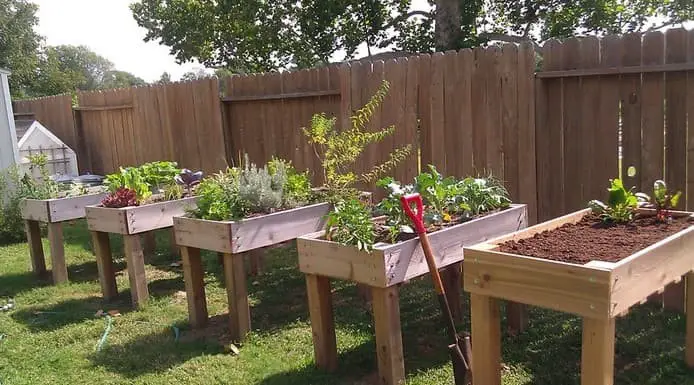
This cedar wood raised planter stands out from its peers due to its built-in bottom shelves, perfect for storing gardening tools. The sturdy construction features bolts and screws, ensuring it can withstand the elements. Measuring 4x4x12 feet in size, with a depth of 3 feet, this planter is ideal for those seeking a thoughtful gift for their grandmother – or anyone who loves to tend to their garden.
Waist high herb garden bed
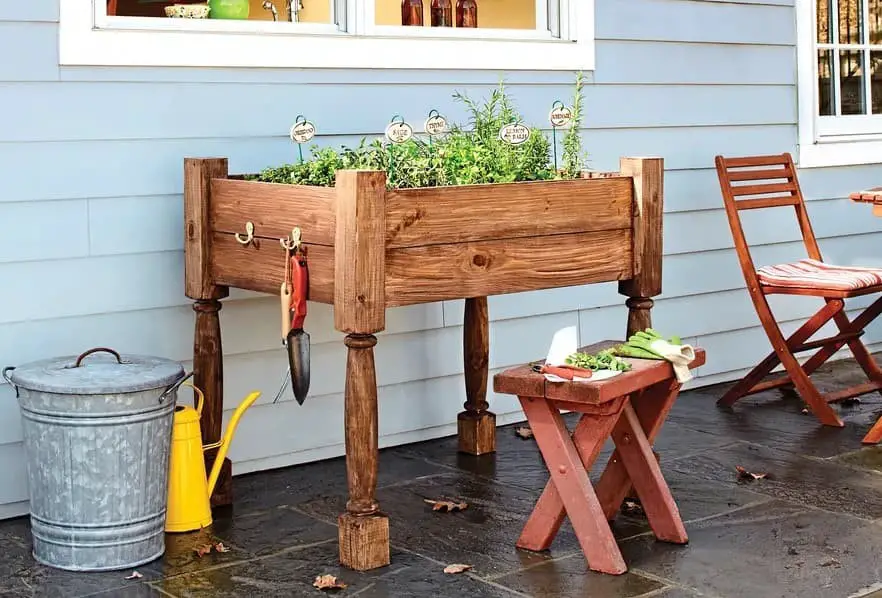
For those seeking to bring a touch of rustic charm to their outdoor space, a farmhouse-style raised herb garden is an excellent choice. This project utilizes pressure-treated wood, balusters, deck posts, side hooks, and deck screws to create a sturdy and attractive planter. To add extra durability, the bottom of the garden bed features a few floorboards serving as a liner to prevent soil from escaping.
For those interested in learning more about this DIY endeavor, you can find the comprehensive instructions here.
Double tier high waist raised garden bed
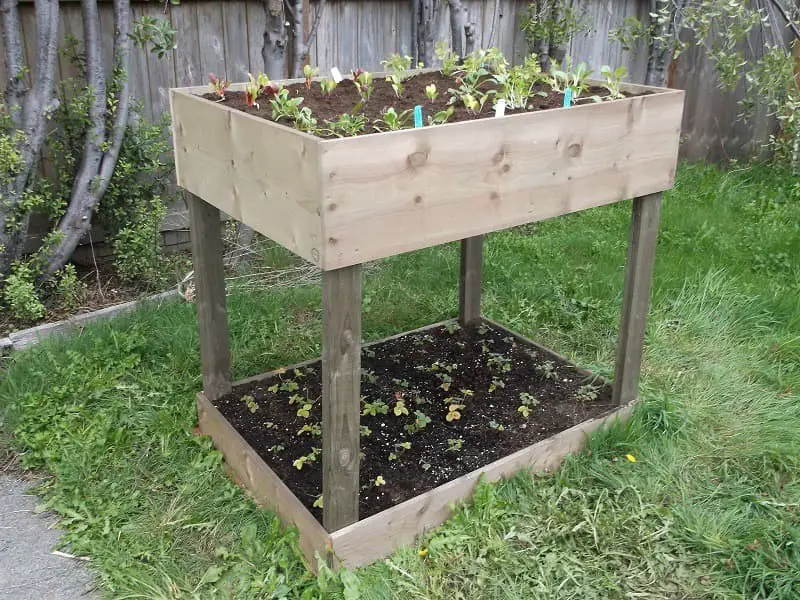
To take your raised garden bed to new heights, consider incorporating a lower planter specifically designed for herbs. This clever design not only maximizes space but also offers a practical solution for areas prone to droughts. By utilizing the drained water from the higher planter, the lower planter can benefit from a steady supply of moisture.
In this particular example, a pine board and deck screw construction was used, resulting in a striking combination of a 4ft deep top planter and a 2ft deep bottom planter. This thoughtful design not only adds visual interest but also provides a functional solution for gardeners.
Lattice tier raised garden bed
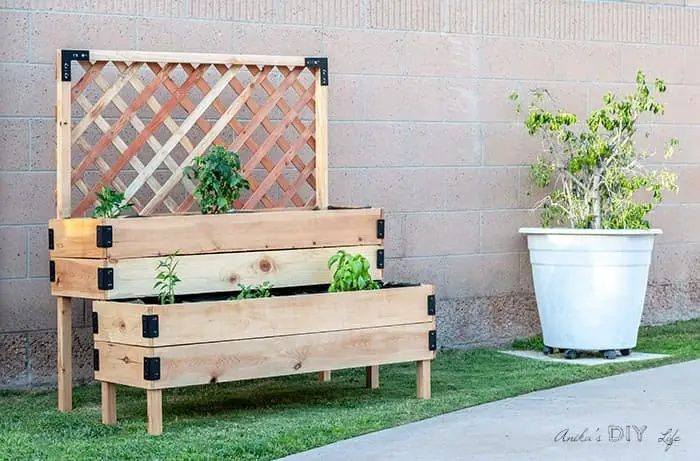
While traditional garden beds often prioritize function over form, this design proves that the two don’t have to be mutually exclusive. By combining floating tiers of raised planters with a sturdy wood lattice frame, you can create a visually striking and functional space that’s perfect for growing vegetables – or even allowing kids to get in on the gardening action.
The key components include 2×4 cedar boards and galvanized deck screws, which provide a rustic yet durable foundation for your garden bed.
Raised self-watering garden bed
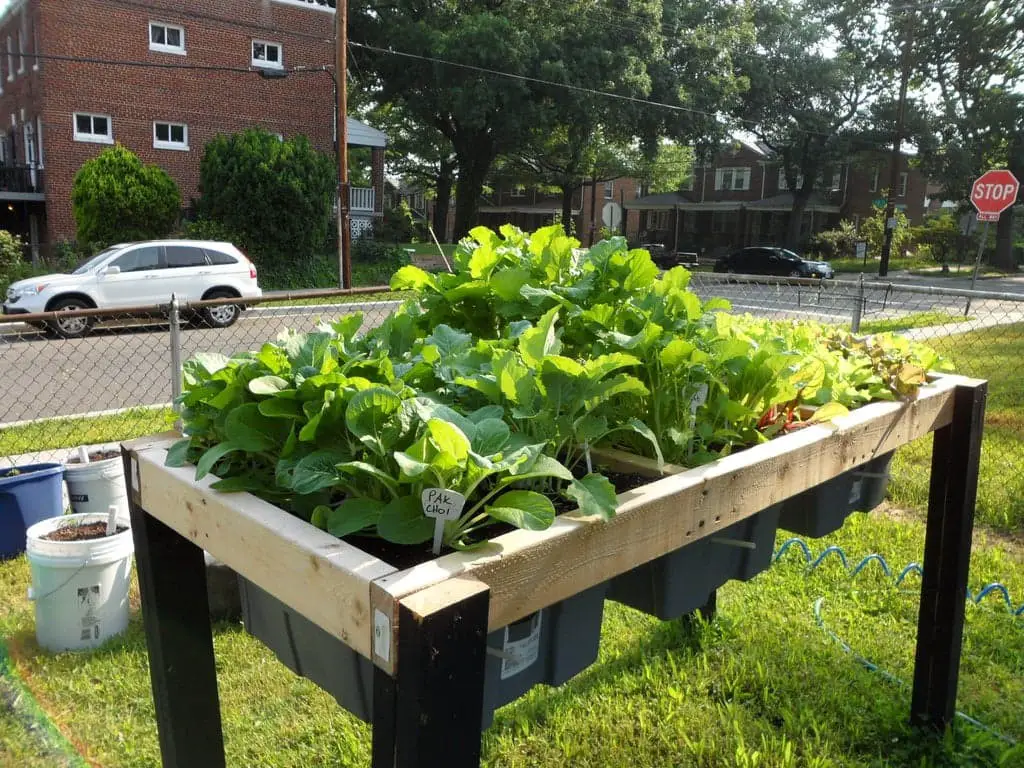
The trend towards eco-friendly and sustainable urban gardening has gained momentum with the introduction of self-watering garden beds. These innovative systems feature a simple PVC pipe design that supplies just the right amount of water to the soil, eliminating the need for constant monitoring. This approach offers numerous benefits, including the ability to leave your plants unattended for extended periods without worrying about wilting.
Additionally, the elevated soil bed creates an inhospitable environment for ground-dwelling pests and insects, providing a natural barrier against unwanted visitors.
7-8. Counter height raised garden
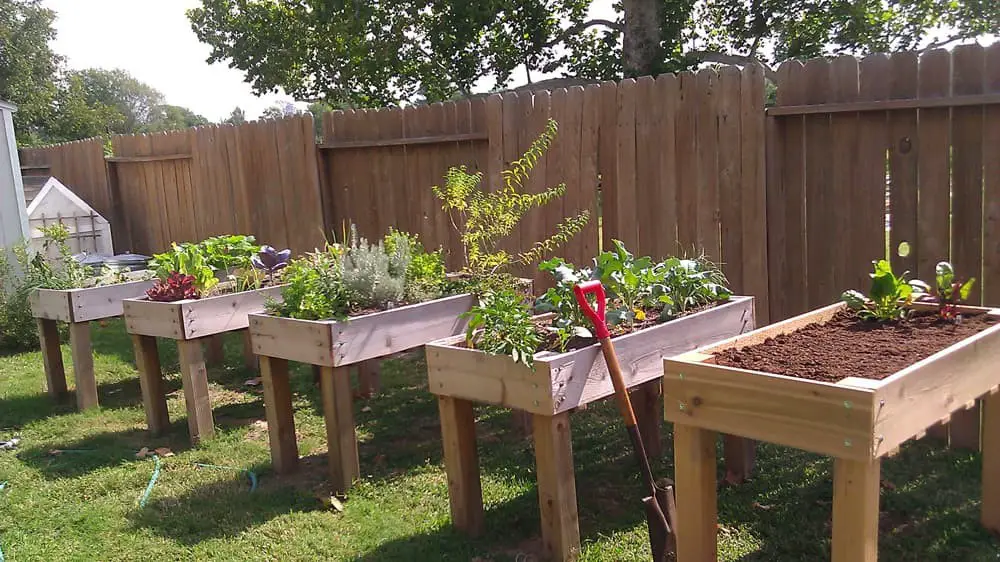
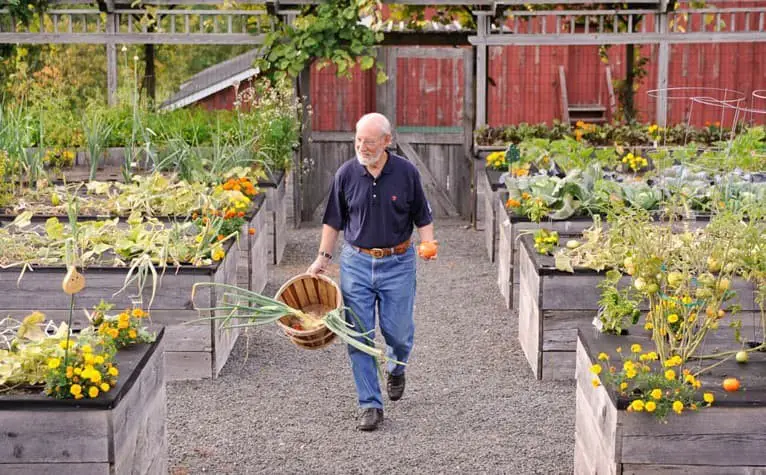
When it comes to gardening, many people prefer the compact approach with a variety of plants per box. One way to achieve this is by creating a counter height raised garden around your fence. This design utilizes 4x4s, each with a depth of 3ft, allowing for a diverse and scenic garden view. The added benefit of this layout is improved pest and weed control.
For those looking to take their sustainable urban gardening to the next level, another option is to create lines of raised vegetable planters throughout your yard. This plan offers a unique and space-efficient way to grow your own produce, making it an attractive choice for those seeking a low-maintenance yet productive garden.
9- U-shaped waist high raised garden bed

Transforming an ordinary yard into a thriving oasis is as simple as crafting a DIY U-shaped raised garden bed. With ample space, you can create a sprawling planter area perfect for growing an array of vegetables and herbs. To elevate the ambiance, consider adding solar-powered corner lights that will not only illuminate your nighttime gardening excursions but also serve as a charming touch to your outdoor sanctuary.
For a comprehensive guide on building this project, simply visit the provided link.
Wood and corrugated metal waist high raised planter
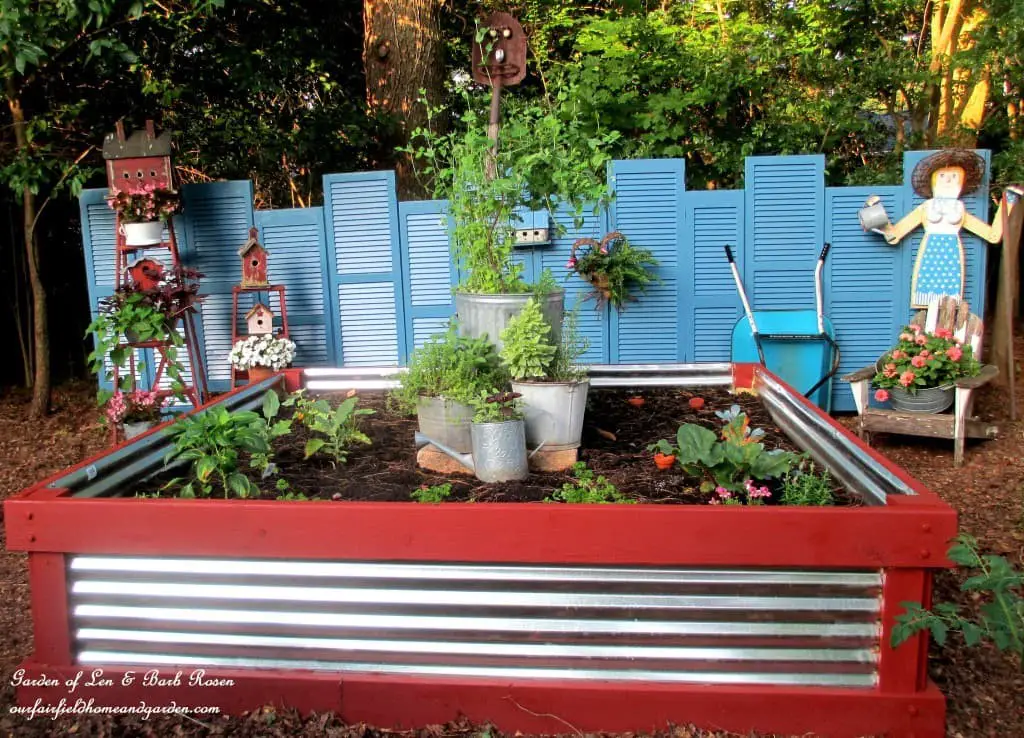
Transform your rustic backyard into a haven for greenery by crafting an affordable waist-high raised planter using corrugated metal encased within a frame of treated wood. To achieve a polished look, consider painting the metal and wood components before assembly. This unique fusion of vegetables and ornamental plants in a single planter will be a striking addition to your outdoor space.
Brick keyhole garden
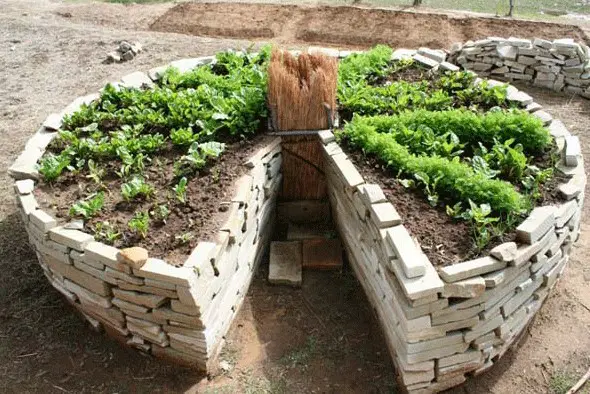
Keyhole gardens have gained popularity as an eco-friendly way to cultivate organic produce, thanks to their unique design featuring side indentations. This innovative feature allows for the seamless integration of a compost bin in the center of the raised planter, typically made from brick. The result is a visually appealing and functional garden that can be replicated with this concept.
Concrete waist high garden bed
By harmonizing your waist-high garden bed with the existing aesthetic and architectural style of your yard, you can create a visually stunning and cohesive outdoor space. Take this example from a homeowner who transformed a curved patio into a raised planter using cement blocks.
The result is a multi-functional feature that seamlessly integrates vegetable gardening on one side, herbs on another, and ornamental plantings on the remaining two sides – a true testament to the beauty of functional design.
Raised galvanized garden bed
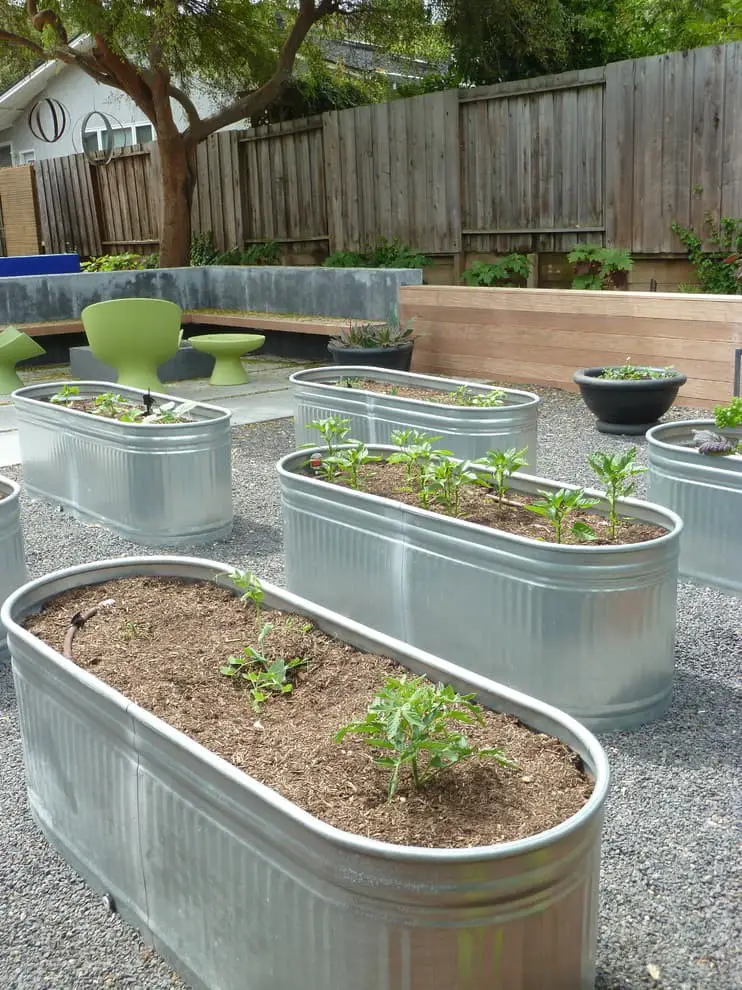
Elevate your gardening experience with the sleek and modern look of raised galvanized troughs. By incorporating these versatile planters into your outdoor space, you can create a contemporary and industrial-inspired garden bed that’s both functional and visually appealing. With raised galvanized troughs, you’ll be able to grow your favorite vegetables and herbs without having to bend down, making gardening more comfortable and enjoyable. The best part?
You can add as many galvanized troughs as you like to achieve the full industrial garden look you’ve always wanted.
Wine box raised garden bed
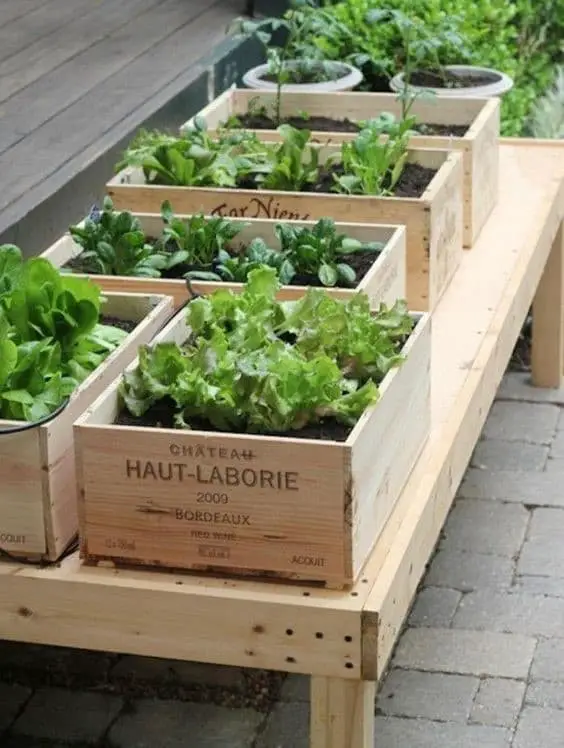
To create a unique and compact raised garden bed, consider constructing a waist-high wooden platform. On top of this base, you can repurpose wooden wine boxes to cultivate a variety of herbs and low-growing vegetables. This innovative approach allows for maximum space efficiency while providing ample room for growth.
Raised milk crate garden bed
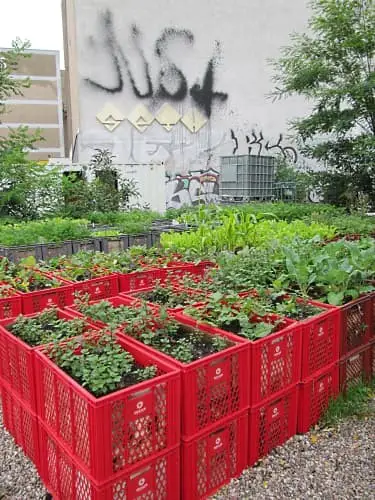
Building upon the principles of our previous waist-high garden bed design, this iteration leverages stacks of milk crates to create a unique structure. In place of wooden wine boxes, these crates provide an eco-friendly and budget-friendly solution. Furthermore, one raised planter is elevated by two and a half crates, mimicking the effect of galvanized steel. For visual clarification, refer to the accompanying diagram.
Tire raised bed
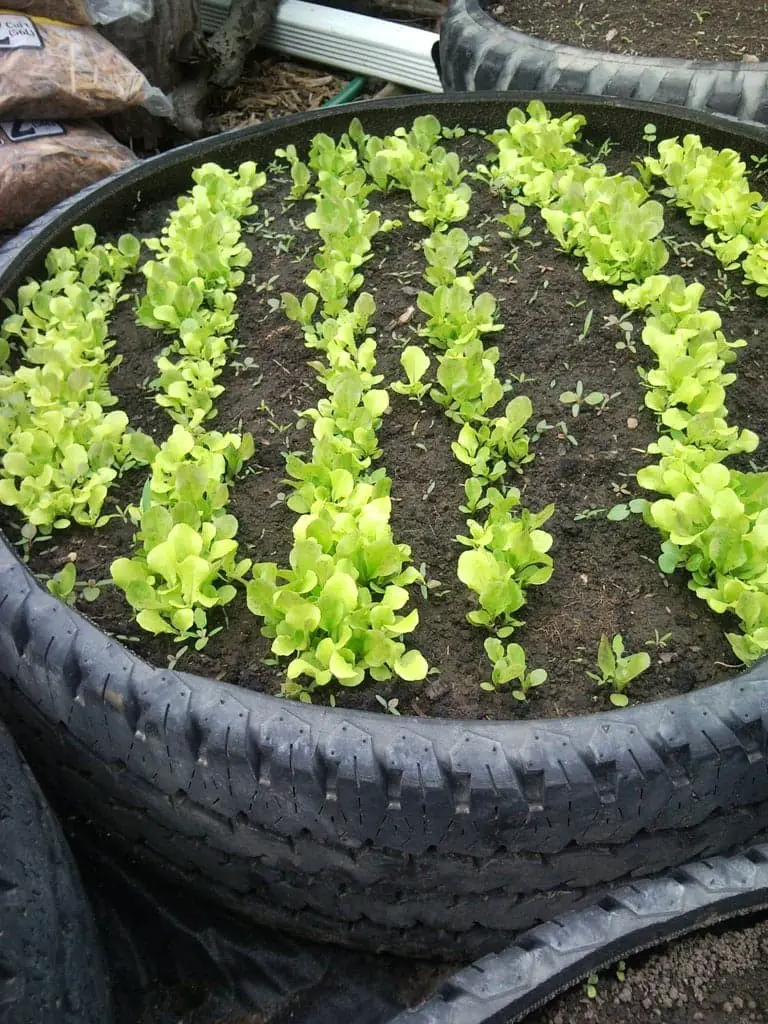
Another economical option for creating a waist-high raised garden bed is to utilize stacks of old tires, building upon the ideas presented earlier. This method isn’t new and can be implemented quickly, typically used by those who are cultivating herbs on a large scale, as it allows for precise watering through drilled holes between the tires.
Painter’s canvas frame raised garden bed
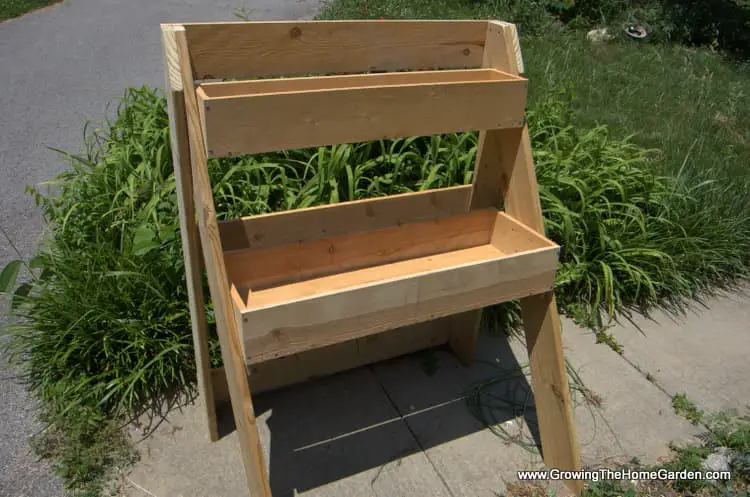
Imagine a miniature version of the classic painter’s easel, but instead of holding a canvas, this compact raised garden bed plan supports an array of vegetables. This ingenious design is not only portable but also engineered to prolong the harvest season for winter crops like beets, cauliflower, and broccoli into the summer months. The elevated structure additionally provides protection from stray animals, making it a highly practical solution for any gardener seeking to maximize their yield.
Vertical raised garden bed
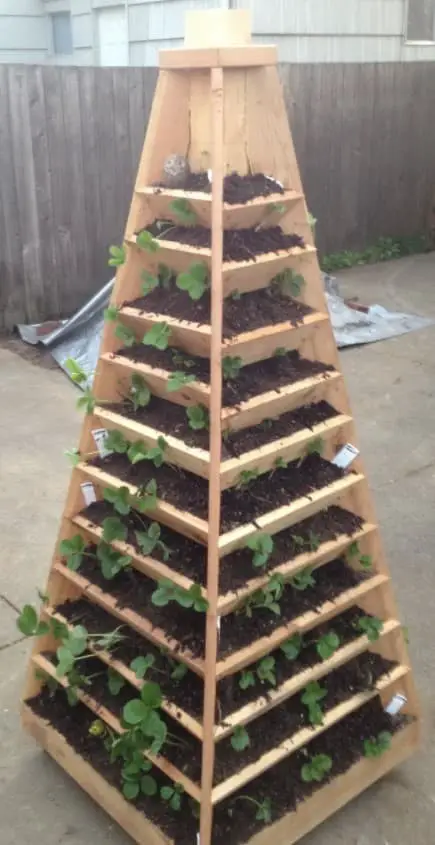
Create a multi-tiered, pyramid-shaped vertical raised garden bed using treated wood, bolts, and screws. This DIY project may require significant time investment for construction. To accelerate seed germination for all plants simultaneously, consider using a hydrofarm germination station. For an angled design without the pyramid shape, opt for a tiered, bench-style raised garden bed made of treated wood. Perfect for layering different plants, this plan can be built independently.
Waist high garden bed with built-in benches
While gardening can be a serene and enjoyable activity, why not take it to the next level by incorporating built-in benches into your raised garden design? Not only will this create a comfortable spot to rest and take in the surroundings, but it can also serve as a platform for displaying other plants or holding essential gardening tools.
The unique feature of having an extended bench in the midst of your yard is sure to catch the attention of visitors and add visual interest to your outdoor space.
Waist high raised garden bed with detachable side fences
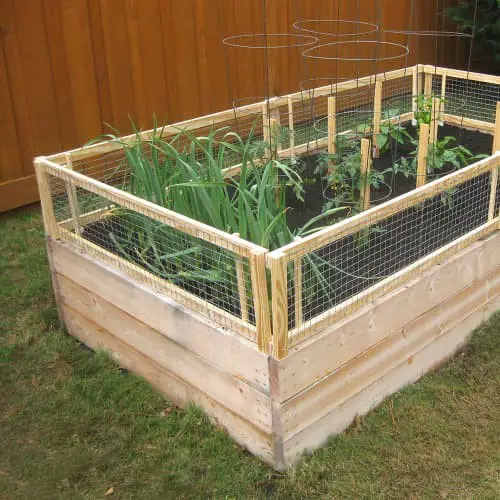
To ensure your raised garden bed remains impervious to unwanted visitors, consider fortifying it with detachable side fences. One approach involves using industrial wire and sturdy wood frames to enclose the raised pallet garden bed. Alternatively, if you already have an established raised bed, you can simply construct the detachable side fences.
For added peace of mind, you could opt for a ground-level soil bed surrounded by higher-than-waist-level fences constructed from industrial wire and wood, as illustrated in this comprehensive garden bed plan.
Sleeper raised garden bed with benches
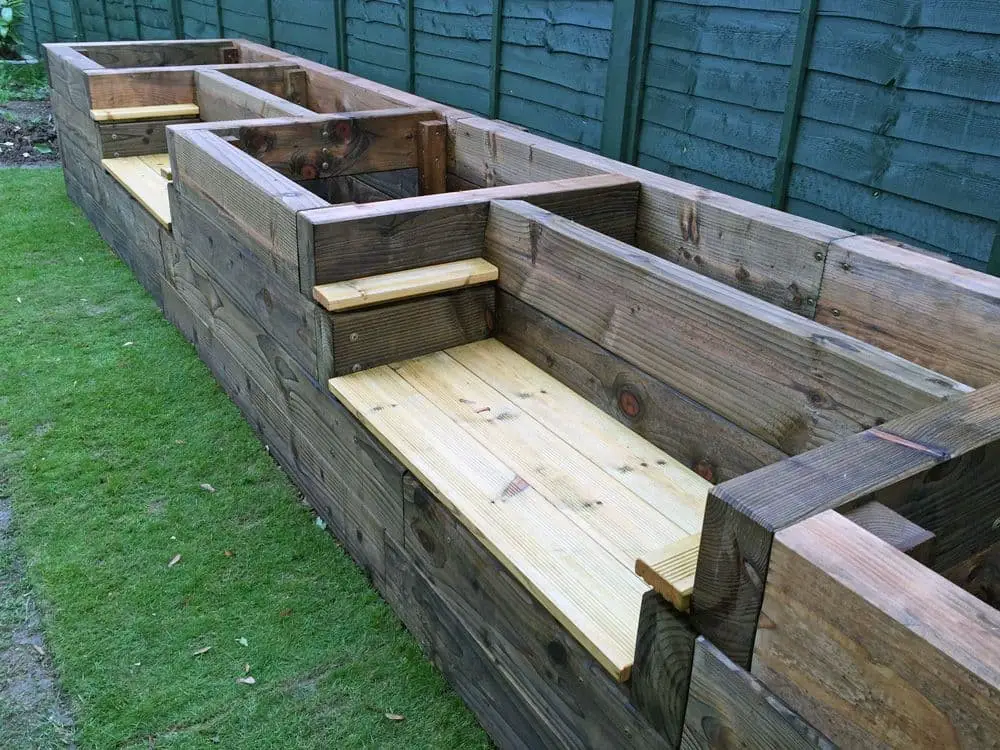
This innovative design combines functionality and visual appeal, allowing you to sit amidst your plants, veggies, and herbs. The sleek decking design features multiple railway sleepers, fence posts, and screws, creating a sophisticated and inviting space. Complete with armrests, this raised garden bed is perfect for lounging among the greenery.
Raised natural wood garden bed
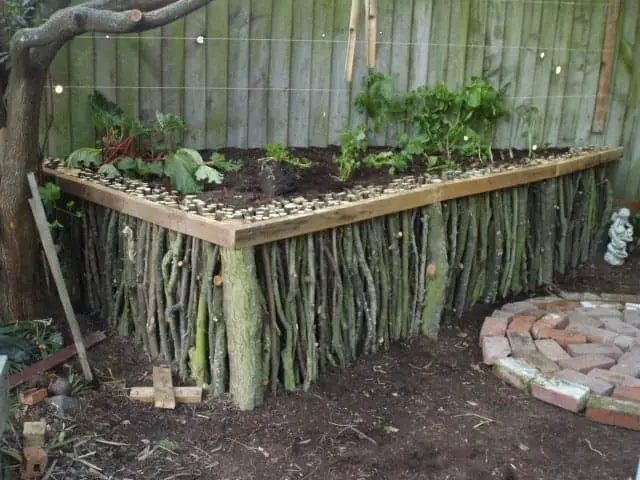
To incorporate a rustic charm into your landscape design, consider creating a raised garden bed using raw or reclaimed wood. The process begins by selecting sturdy pieces of scrap wood and cutting them to an even height. Next, assemble a wooden frame with wood boards serving as the base, providing a platform for the soil. By doing so, you’ll not only add visual interest but also create a unique and natural-looking feature that will enhance your outdoor space.
Raised metal garden beds
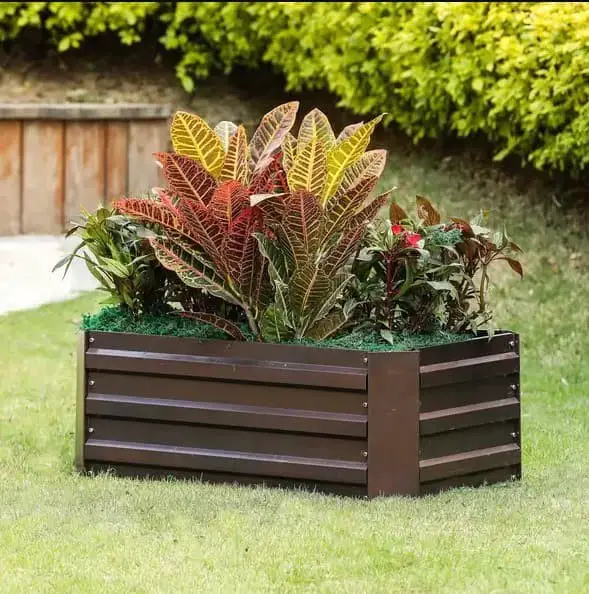
While purchasing pre-made raised metal garden beds can be a convenient option, crafting one from galvanized metal or aluminum offers a unique opportunity to create a bespoke piece that perfectly suits your gardening style. The rich dark brown hue of such a bed provides a striking contrast against the lush greens of your plants, making it an attractive addition to any outdoor space.
Pocket waist high raised bed
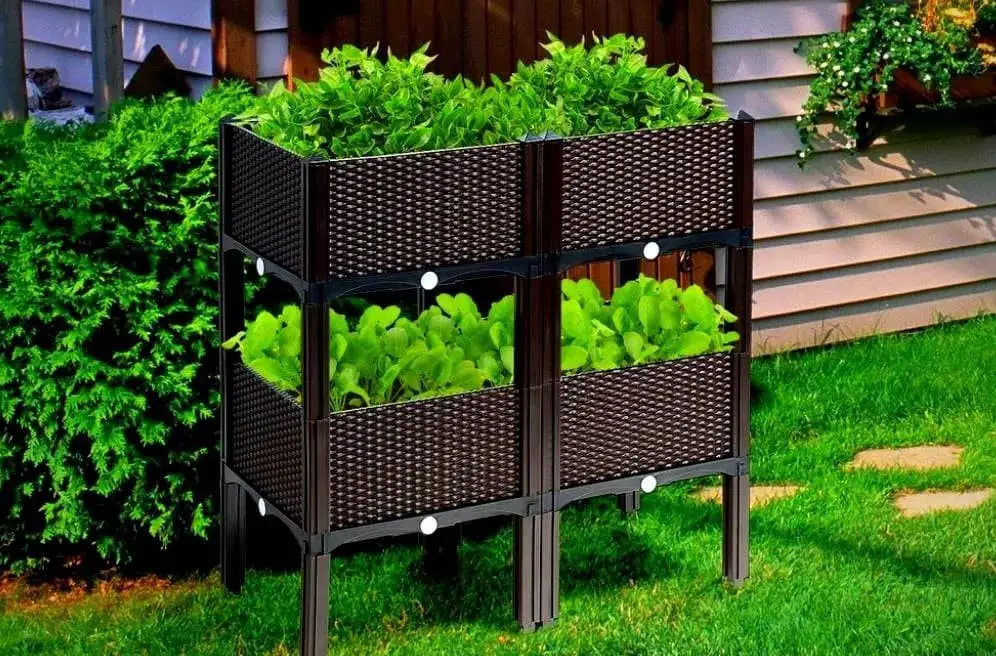
For those looking to cultivate their herbs and salad greens, consider investing in a cart-style raised garden bed. This prefab option is constructed from high-quality plastic featuring tiny holes at the bottom for optimal drainage. With four pockets, you can grow a variety of herbs and veggies. Alternatively, you can create your own using wood, metal, or plastic, offering flexibility and customization.
Portable raised garden beds
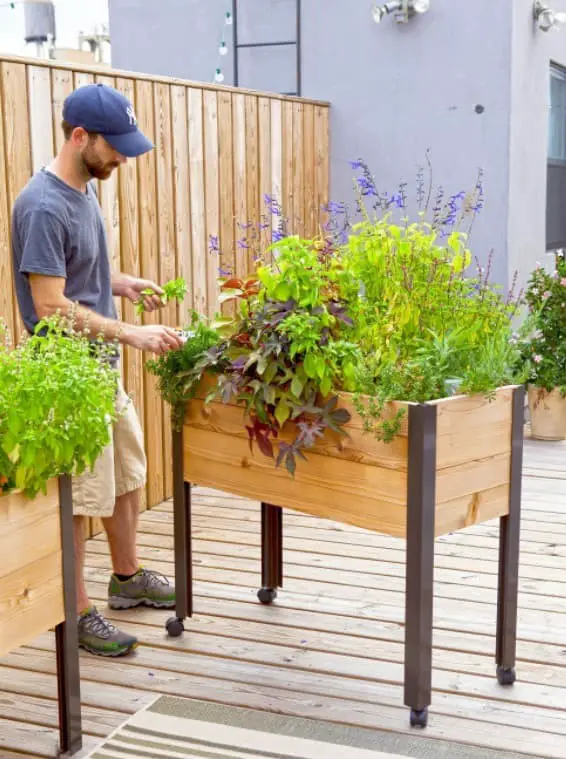
While abandoning traditional gardening duties to tend to plants is one matter, having a portable garden bed can revolutionize your experience. This versatile feature allows you to effortlessly relocate all your greenery indoors during the harsh winter season, ensuring year-round growth and nurturing. For those seeking this level of convenience, a cedar wood waist-high garden bed with rollers on each leg stands out as an exceptional option.
Its innovative design seamlessly blends portability with durability, making it an ideal choice for any gardener looking to elevate their indoor gardening game.
Bale and straw raised garden bed
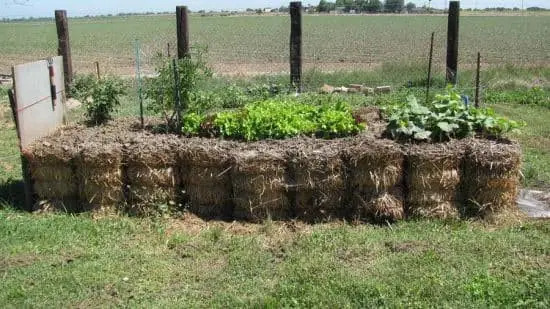
One of the most eco-friendly and low-maintenance ways to create a raised garden bed is by using straw and bale materials. Not only do they provide natural insulation, but they can also serve as organic mulch for your plants. While this method still requires wood stakes around the perimeter to contain the soil, it’s an effective way to reduce waste and promote healthy plant growth. For a visual reference, imagine a bed of straw or bale encased by wooden stakes, with soil held within.
FAQs
What is the best height for raised garden beds?
When it comes to designing the perfect raised garden bed, height and depth are crucial considerations. While an ideal height of 11 inches with a minimum depth of 2 feet is often recommended, this figure can vary depending on individual needs and gardening styles. For instance, waist-high raised beds offer a convenient solution for gardeners who value ease of access and reduced strain on their backs.
Ultimately, the optimal height and depth will depend on factors such as personal comfort, mobility, and the specific plants being cultivated.
What are the most cost-effective ways to fill a raised garden bed?
While many gardeners assume that only fertile soil can fill raised beds, there are several alternative methods to consider. One approach is Hugelkultur, which involves burying organic matter and rotting debris beneath the first layer of soil. This sustainable method allows for multiple layers of soil without requiring additional organic matter. The lasagna fill method follows a similar principle, starting with cardboard layers, followed by leaves and compost, and finishing with soil.
Core gardening is a more complex process that uses spongy materials to retain moisture throughout the season. After adding a thin layer of soil with organic material or fertilizer, this method helps control weeds and pests. For acid-loving plants like marigolds, potatoes, peppers, and sweet potatoes, peat moss makes an excellent filler. Organic compost can also be used as a standalone filler, although it may take years to complete the composting process.
Kitchen scraps, peelings, animal manure, and grass clippings are ideal ingredients for any garden bed. Another option is the Ruth Stout method, which involves filling the raised bed with at least 8 inches of hay in early spring or fall, topped with a layer of compost or cured manure. Finally, incorporating aeration materials like perlite, pumice, coarse sand, or lava rocks into soil layers can promote healthy airflow for plants in raised beds.
Do raised beds need liners?
Despite their eco-friendly nature, raised beds still require liners to optimize performance. These liners serve as a natural insulation for the soil, maintaining its loose structure even in extreme weather conditions. Additionally, they provide a barrier against weed growth and unwanted critters like gophers and moles. Top choices for liner materials include landscape fabric and non-porous plastics, offering a reliable solution for raised bed enthusiasts.
What are the best vegetables to grow in a raised bed?
When it comes to choosing the ideal crops for your raised bed, the options are vast and varied. However, some veggies truly thrive in this environment. For a bountiful harvest, consider growing root vegetables like carrots, beets, and radishes. Salad greens such as lettuce, kale, and arugula also do exceptionally well in raised beds. Tomatoes, onions, and all manner of herbs – from basil to cilantro – are other top picks for this type of garden bed.
Conclusion
When it comes to designing a garden, waist-high raised beds are often an underrated gem. The benefits of this approach are numerous and well worth considering. For one, you’ll no longer have to strain your back or worry about bending down to tend to your plants – the raised bed takes care of that issue altogether. This design also lends itself to more efficient watering and soil management, which can lead to healthier and happier plants.
And let’s not forget the visual appeal – waist-high raised beds can be a stunning addition to any landscape, adding texture, interest, and even creating a sense of drama. If you have spare space in your yard, it might be worth considering converting that area into a waist-high raised garden bed.
Related Posts
When it comes to precision woodworking, having the right equipment can make all the difference. In this post, we’ve curated a list of the 12 best dowel jigs that experts recommend for achieving top-notch results in 2024. Whether you’re a seasoned woodworker or just starting out, these tools are designed to help you produce flawless joints and precise cuts.
From traditional woodworking techniques to innovative modern methods, our selection includes a range of options to suit different skill levels and projects. So, if you’re looking to take your woodworking game to the next level, keep reading to discover our top picks for the best dowel jigs on the market.

